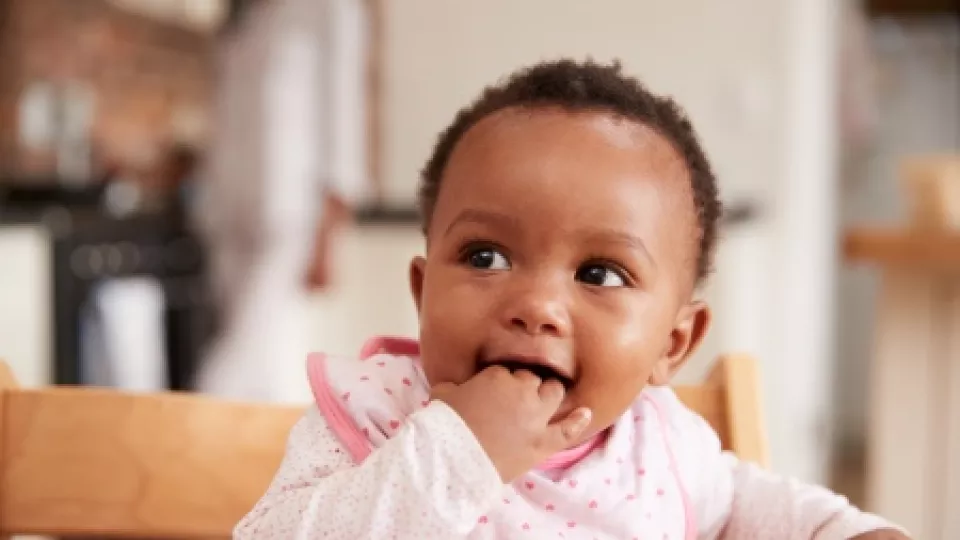
Using Signs to Help With Early Language Skills
Many parents are hesitant to use signs with their babies because they fear it will delay their child’s verbal growth. However, research supports the use of symbolic gestures to foster language skills and verbal development.
A typically developing child’s first words occur around 12 months of age (sometimes sooner, sometimes later). But, using some simple American Sign Language gestures can help your child communicate—even before he or she uses verbal words. The benefits of using sign with children before they can talk include:
- Prevention of behavior problems for young children, especially those at risk of developmental delays, language delays or sensory impairments
- Giving your typically developing child ways to communicate their needs earlier (before they learn verbal communication)
What are good signs to start with?
The best signs are the ones that are useful for you and your baby. Typically, those may include “more,” “all done,” “eat,” “open” and “help.” Teaching sign may seem intimidating, but it can be easy and fun for both you and your baby.
You can find videos of signs for several kid-friendly words at www.handspeak.com - Opens in a new window.
“More” may be the easiest to start with because it helps your child get something he or she wants. While playing with babies, notice what interests or motivates them. As an example, let’s use bubbles:
- First, blow bubbles and wait for a reaction. Once the bubbles have popped, look at your child and say, “Do you want more?”
- Immediately take your child’s hands and gently bring them together (the sign for “more”) and say “more” excitedly.
- Then immediately blow bubbles to provide reinforcement.
- Repeat this process until your child is no longer interested in the bubbles.
Once you have helped your child by moving their hands, you can begin to add a wait time. For example, after asking “do you want more?” silently count to five and look at your child expectantly. If he tries to sign, immediately congratulate them with excitement and say, “Yes! You want more,” while modeling the correct sign with your hands. If you do not get a response, ask again, “Do you want more?” Silently count to five again and look at your child expectantly. If he does not try, gently take his hands and help him sign “more” while saying “You want more” and then immediately blow the bubbles.
Just remember, keep it fun and simple, using an activity that is engaging and motivating (like play or eating). Always encourage any attempt to communicate, and don’t be discouraged if you do not see your child using sign immediately. It make take a while to get the hang of it, but persistence and consistency will give your child more tools to help express wants and needs, while hopefully decreasing whining/crying behaviors.


